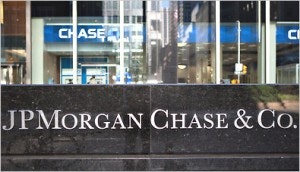
Photo: Jeff Turner, via Wikimedia Commons.
Perhaps the simplest and clearest reason for the cause of the 2008 financial crisis remains the fact that lenders made loans to people who couldn’t or wouldn’t repay them.
These less-than-stellar borrowers were branded “subprime” — a scarlet letter in today’s financial world. But we could still see lending standards ease and the stigma fade for these credit-hungry borrowers in the near future. If pressures from shareholders and Wall Street continue to grow, banking executives could begin to once again listen to those stuck at the low end of the FICO spectrum.

The Federal Reserve recently released its April 2013 survey on bank lending practices. Overall, the survey found that banks are slightly easing lending standards for prime borrowers as demand ticked higher, as did competition from other banks for those loans.
While the most significant easing was related to business loans, a few banks reported easing standards for prime residential mortgages. On the flip side, only one bank responded that it was somewhat more likely to lend to a borrower with a FICO score of 620 and a down payment of only 10%, compared with a year ago. This finding clearly doesn’t mean banks are returning to the old habit of hastily originating loans to questionable borrowers. But impatience and short-term thinking could quickly reverse the trend.
Profitable, for now …
The flood of defaults during the past several years, coupled with the ultra-low-interest-rate environment, has caused many banks to see a steady decline in net interest income. Despite falling revenues, banks have been able to post record profits via expense-cutting initiatives and steadily releasing reserves set aside for a doomsday scenario.
However, the pressure to begin driving top-line revenue has already begun to emerge. After JPMorgan Chase & Co. (NYSE:JPM), Wells Fargo & Co (NYSE:WFC), and Bank of America Corp (NYSE:BAC) all reported first-quarter results, shares of all three banks sold off because of a lack of revenue growth. For long-term bank investors, this sluggish growth may not be too much of a concern. However, executives at these banks are all too often judged on how they manage for the short term, not the next five to 10 years. In the eyes of Wall Street, several consecutive quarters of sluggish revenue growth means heads must roll.
Here’s how the three banks have seen net interest income trending for the past three years:

In billions of dollars. Source: S&P Capital IQ.
The road ahead in the short term doesn’t appear to be more fruitful for frugal lenders. Roughly two-thirds of large banks that responded to the survey noted the increased competition from other banks and nonbank lenders as a possible reason for eased credit standards — by far the most commonly acknowledged reason. As if spreads weren’t thin enough simply because of the flat yield curve, more competition will continue to squeeze margins on loans to the most creditworthy borrowers.
Anomaly or normality?
If interest rates stay low for an extended period and banks’ non-interest revenue lines remain flat, lenders may begin to make loans that offer a greater return — but, unavoidably, a greater risk. If greed and short-term pressures return (something they are known to do), subprime lending may not simply be a blip in the history of finance but a cyclical beast that is preparing its ominous return if lenders become too aggressive.
Banks will ultimately have to ease lending standards and find the point of equilibrium between generating returns for its shareholders and sporting a durable balance sheet. If done prudently, subprime lending can be profitable — much like well-managed credit card loan portfolios. However, if short-term pressures push lenders to too far down the risk spectrum, trouble will return.
The article Will Banks Embrace the Return of Subprime Lending? originally appeared on Fool.com and is written by David Hanson.
David Hanson has no position in any stocks mentioned. The Motley Fool recommends Wells Fargo and (NYSE:WFC) owns shares of Bank of America, JPMorgan Chase, and Wells Fargo.
Copyright © 1995 – 2013 The Motley Fool, LLC. All rights reserved. The Motley Fool has a disclosure policy.